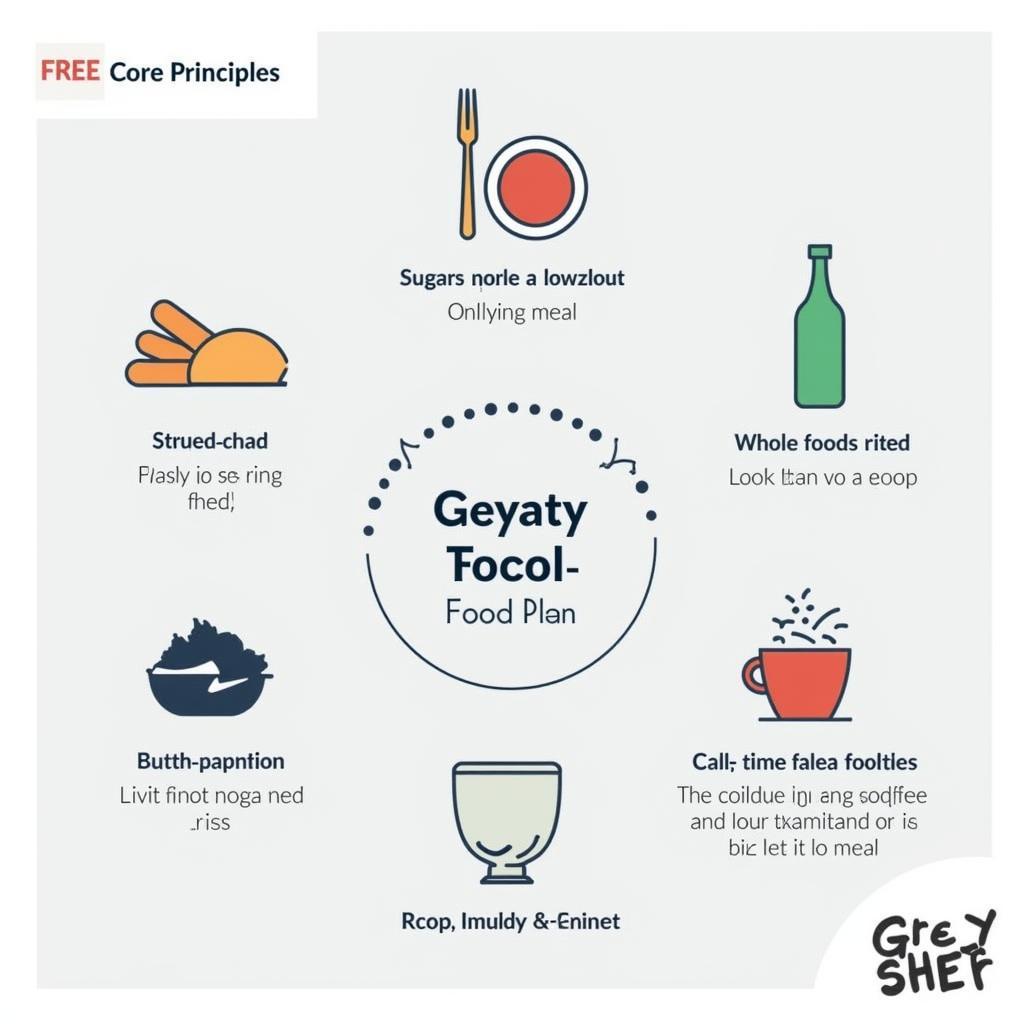The Grey Sheet Anonymous Food Plan is a structured meal plan often used in conjunction with 12-step recovery programs for individuals dealing with food addiction or disordered eating. It provides a framework for balanced nutrition, focusing on portion control and regular meals. This plan emphasizes whole, unprocessed foods and discourages the consumption of refined sugars, flour, and certain other ingredients believed to trigger addictive behaviors. Let’s delve into the details and understand how this plan can be a valuable tool on the path to recovery.
What is the Grey Sheet Anonymous Food Plan?
The grey sheet food plan, central to recovery journeys in GreySheeters Anonymous, isn’t about restriction but relearning how to nourish your body. It encourages a shift away from emotional eating and toward mindful consumption. It’s not a diet; rather, it’s a lifestyle change designed to support long-term recovery. The plan helps individuals establish a healthy relationship with food by providing specific guidelines for what and how much to eat.
This structured approach can be particularly helpful for those in early recovery, offering a sense of stability and control. It removes the guesswork from meal planning and can reduce anxiety around food choices.
Key Principles of the Grey Sheet Anonymous Food Plan
The grey sheet anonymous food plan revolves around a few core principles. These principles, when followed consistently, can help individuals develop a healthier relationship with food and achieve sustainable recovery.
- Structured Meals: Three meals a day at regular intervals, with no snacking between meals. This helps regulate blood sugar and reduce cravings.
- Portion Control: Specific portion sizes are prescribed for each food group, ensuring balanced nutrition and preventing overeating.
- Whole, Unprocessed Foods: The plan emphasizes nutrient-dense foods like fruits, vegetables, lean proteins, and whole grains.
- Limited Sugar and Flour: Refined sugars and white flour are generally restricted due to their potential to trigger cravings.
- No Caffeine or Alcohol: These substances are often avoided as they can interfere with recovery and emotional stability.
 Core Principles of the Grey Sheet Anonymous Food Plan
Core Principles of the Grey Sheet Anonymous Food Plan
Is the Grey Sheet Food Plan Right for You?
The grey sheet anonymous food plan can be a powerful tool for individuals struggling with food addiction or disordered eating. However, it’s essential to remember that it’s not a one-size-fits-all solution. Consulting with a healthcare professional or registered dietitian is crucial before starting any new meal plan.
“The grey sheet food plan provides a much-needed structure for those struggling with food addiction,” says Dr. Sarah Miller, a registered dietitian specializing in eating disorders. “It helps individuals establish healthy eating habits and regain control over their relationship with food.”
Tips for Following the Grey Sheet Anonymous Food Plan
- Plan Ahead: Prepare meals and grocery shop in advance to avoid impulsive food choices.
- Seek Support: Connect with a GreySheeters Anonymous group or a therapist specializing in eating disorders.
- Listen to Your Body: Pay attention to your hunger and fullness cues.
- Be Patient: Recovery is a journey, not a destination. Be kind to yourself and celebrate small victories.
Conclusion: Embracing a Balanced Approach with the Grey Sheet Anonymous Food Plan
The grey sheet anonymous food plan offers a structured approach to recovery from food addiction and disordered eating. By focusing on balanced nutrition, portion control, and mindful eating, this plan can help individuals develop a healthier relationship with food and achieve long-term recovery. Remember, consulting with a healthcare professional is essential before starting any new meal plan.
FAQ
- What is the purpose of the grey sheet food plan? To provide a structured approach to eating, focusing on balanced nutrition and portion control, to support recovery from food addiction.
- What foods are allowed on the grey sheet food plan? Whole, unprocessed foods such as fruits, vegetables, lean proteins, and whole grains. Refined sugars, flour, caffeine, and alcohol are generally restricted.
- How often should I eat on the grey sheet food plan? Three meals a day with no snacking between meals.
- Is the grey sheet food plan a diet? No, it’s a lifestyle change designed to support long-term recovery from food addiction.
- Do I need to consult a healthcare professional before starting the grey sheet food plan? Yes, consulting with a healthcare professional or registered dietitian is crucial before making any dietary changes.
- Where can I find support while following the grey sheet food plan? GreySheeters Anonymous groups and therapists specializing in eating disorders can provide valuable support.
- How long should I follow the grey sheet food plan? The length of time varies depending on individual needs and recovery progress. It’s best to discuss this with a healthcare professional.
Need support with the grey sheet anonymous food plan? Contact us at Phone Number: 02437655121, Email: minacones@gmail.com or visit us at 3PGH+8R9, ĐT70A, thôn Trung, Bắc Từ Liêm, Hà Nội, Việt Nam. We have a 24/7 customer support team.